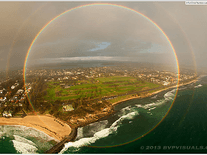

"We are going to be able to answer questions that we don't even know what the questions are yet," he said. The telescope is so precise, Nelson said, that scientists will be able to see the chemical composition of planets deep in space and determine if they are habitable or not. The telescope is designed to peer back so far that scientists can get a glimpse of the dawn of the universe about 13.7 billion years ago. This image provided by NASA on July 11, 2022, shows galaxy cluster SMACS 0723, captured by the James Webb Space Telescope. It is also able to use the infrared spectrum, while the Hubble used mainly optical and ultraviolet wavelengths. The Webb telescope can see light that was created just after the Big Bang, the furthest humanity has peered into the past.Ī successor to the Hubble Space Telescope, Webb is about 100 times more sensitive than its 30-year-old predecessor. And that light that you are seeing on one of those little specs (in the picture) has been traveling for over 13 billion years," said NASA Administrator Bill Nelson, who attended Monday's news briefing along with Biden and Vice President Kamala Harris. "Light travels at 186,000 miles per second (299,000 meters). That is because it can see galaxies that are so far away that it takes light from those galaxies billions of years to reach the telescope. Scientists describe the telescope as looking back in time. The $10 billion telescope, the largest and most powerful ever launched into space, peers farther into the cosmos than any before it. They show areas of the universe where researchers will focus future scientific inquiries. Tuesday’s images took weeks to render using data from the telescope. President Joe Biden said the telescope offered "a new window into the history of our universe."


 0 kommentar(er)
0 kommentar(er)
